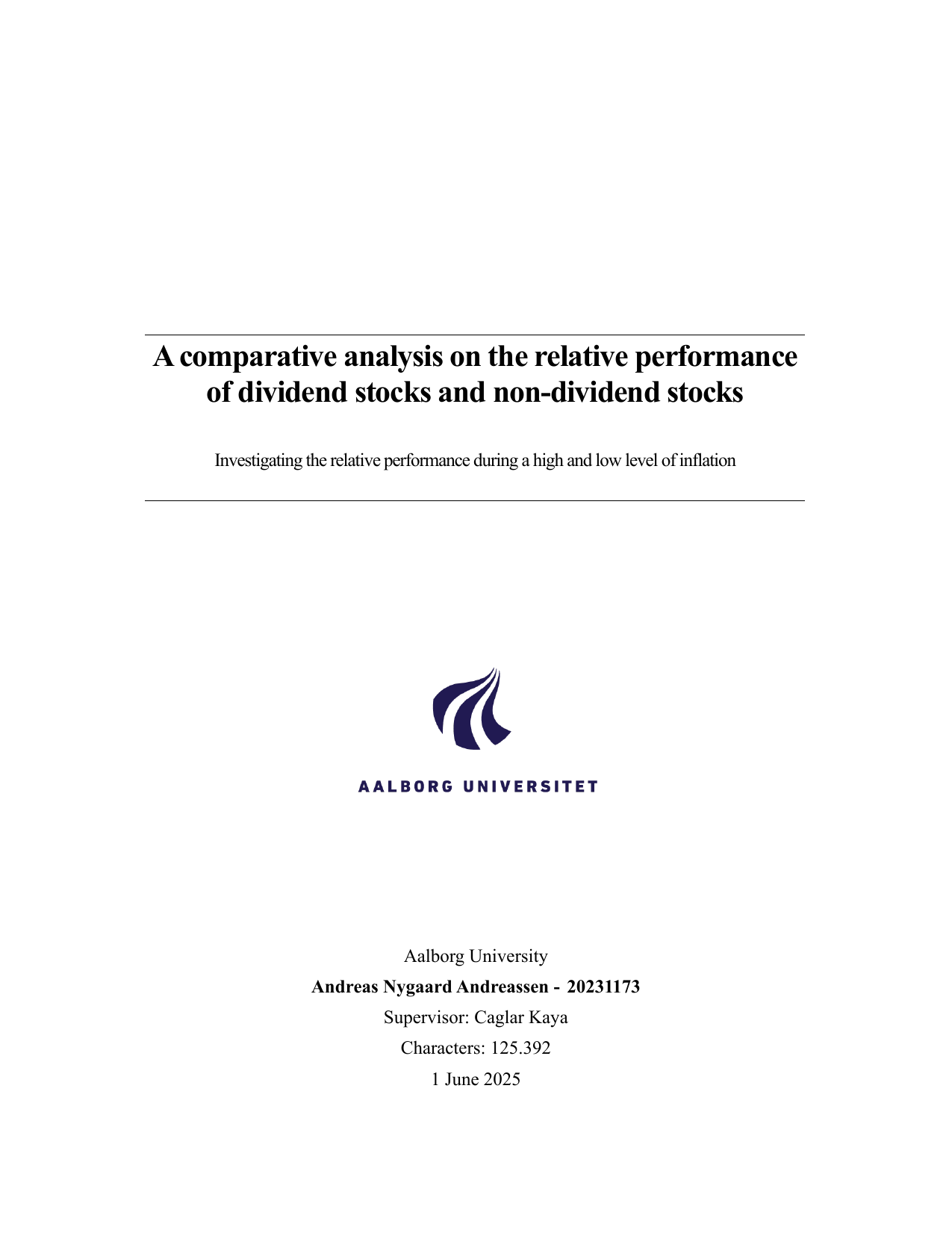
A comparative analysis on the relative performance of dividend stocks and non-dividend stocks - Investigating the relative performance during a high and low level of inflation
Author
Term
4. semester
Publication year
2025
Submitted on
2025-06-01
Pages
64
Abstract
Dividend policy remains a widely debated topic in corporate finance, with no clear consensus on which policy is more optimal. This thesis investigates the relative return and volatility of dividend-paying and non-dividend-paying stocks, with a particular focus on the role of inflation. Using quarterly panel data from S&P 500 firms between 2010 and 2024, fixed effects models and pooled OLS are applied in the analysis to evaluate three hypotheses: that dividend paying stocks deliver higher returns than non-dividend paying stocks: that dividend paying stocks’ relative performance improves under high inflation; and that they exhibit lower volatility regardless of inflation levels. The findings do not support the first hypothesis, as the return difference for the full sample and under high levels of inflation, when controlling for firm characteristics suggest insignificance. For a low level of inflation, non-dividend paying stocks are expected to generate 1 to 2 percentage points higher quarterly returns compared to dividend paying stocks. However, the second hypothesis cannot be rejected, as the relative return advantage of non-dividend paying stocks diminishes in high inflation environments. The third hypothesis is strongly supported, with dividend paying stocks consistently showing lower volatility across all levels of inflation of about 2 to 2.5 percentage points. The thesis contributes to the current literature by highlighting the importance of inflation in dividend-related investment decisions.
Keywords
Documents
